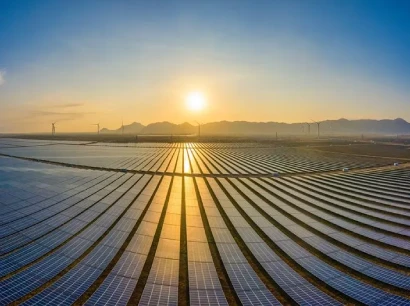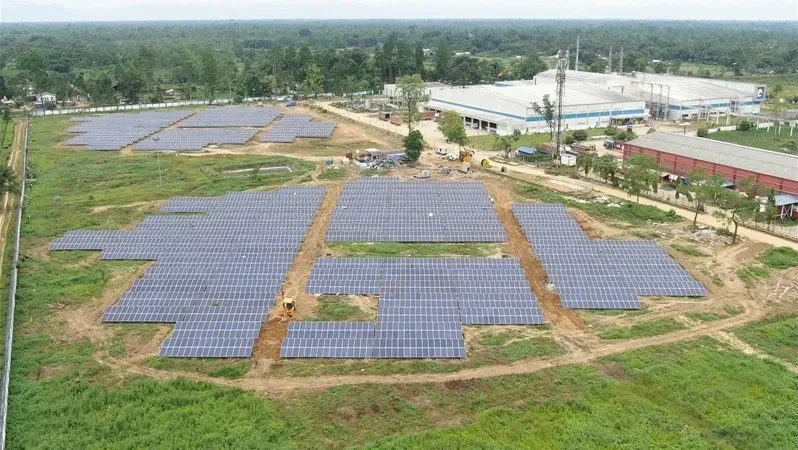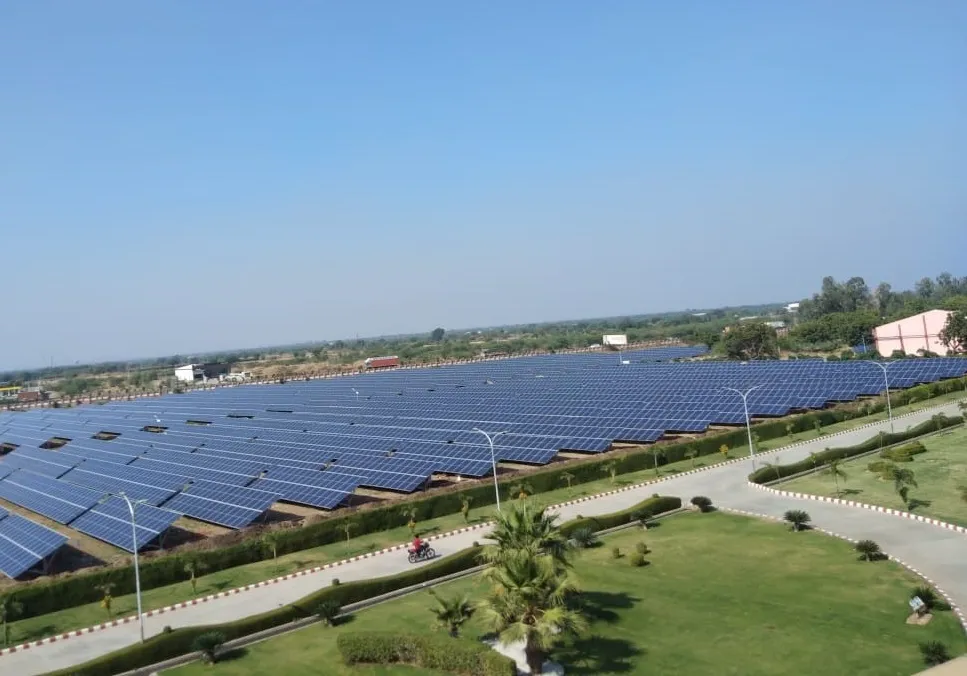
What is a Ground-Mounted Solar System?
Ground-mounted solar refers to a solar panel system that is fixed directly to the ground instead of being placed on a roof. This setup usually uses strong racks connected to piles driven into the ground or mounted on concrete footings. This design allows panels to be set at the best angle to capture the sunlight year-round, which boosts overall energy production.
About 60% of global solar installed capacity comes from ground-mounted solar farms, highlighting its widespread adoption. In India specifically, there is enormous potential for ground-mounted solar: the National Institute of Solar Energy (NISE) reports that India could deploy about 3,343 GWp of ground-mounted solar PV across 27,571 square km of wasteland.
Unlike rooftop solar, ground-mounted systems can be expanded to meet higher energy needs. This makes them suitable for commercial, or even utility-scale solar projects. Another advantage is that they don’t need a roof structural assessment, which can simplify the installation process.
How Ground-Mounted Solar Systems Work?
A ground-mounted solar installation works like any other solar PV system. Solar cells in the panels convert sunlight into direct current (DC) electricity, which is then sent through wiring to one or more inverters. The inverter changes DC power into alternating current (AC), the type of electricity used in businesses.
Any extra energy produced by the system can be sent back to the grid through net metering, effectively turning your meter backward and earning you credit on your electricity bill.

Rooftop Solar Plant for HUL

Rooftop Solar Plant for RSWM
Advantages of Ground-Mounted Solar
There are several benefits to ground-mounted solar that make it appealing for many businesses:
- Optimal orientation and tilt control: Panels can be positioned perfectly to maximize energy production.
- Improved cooling and airflow: Better ventilation keeps panels cooler, which can slightly enhance efficiency.
- Easy maintenance and access: No need to climb on rooftops for cleaning or repairs.
- Scalability: Ideal for larger installations where rooftop space is limited.
Key Factors to Consider Before Installing
Before starting your ground-mounted solar installation, it is essential to consider several factors to ensure optimal performance and cost-effectiveness.
Site & Land Conditions:
The size, shape, and slope of your land directly influence how many panels can be installed and how efficiently they will operate. Flat or gently sloped land with minimal shading is ideal. Soil type is also important; rocky or loose soil might require extra foundation work, which can raise costs.
Climate & Solar Resource:
Understand your region’s solar irradiance and seasonal sunlight patterns to accurately estimate energy production. Extreme weather conditions, such as high winds, heavy rain, or snow, should be considered in system design. Dusty or coastal areas may need additional anti-corrosion protection and regular cleaning.
Orientation & Tilt:
Panels should face true south (in the northern hemisphere) and be tilted according to your latitude for maximum efficiency. If you choose a tracking system, you can further increase energy yield but be prepared for higher installation and maintenance costs.
Regulatory & Financial Considerations:
Check local zoning laws, permits, and interconnection policies. Larger projects may need environmental assessments. Financially, consider the total system cost, including panels, mounting, wiring, installation, and ongoing maintenance. Look into solar incentives, subsidies, tax credits, and net metering options to reduce your payback period and improve ROI.
FAQs
How is ground mounted solar different from rooftop solar?
A ground mounted solar is installed on the ground using racks or mounting structures, rather than on a roof. It allows panels to be placed at the optimal tilt and orientation for maximum sunlight exposure, which can improve energy production. Unlike rooftop solar, it doesn’t depend on roof space or condition, making it ideal for larger systems or properties with limited roof area.
What are the main advantages of ground mounted solar?
The key advantages of ground mounted solar include higher efficiency due to optimal tilting, better cooling and airflow around the panels, easy access for cleaning and maintenance, and scalability for larger energy needs. These systems are also flexible in placement, as they can be installed anywhere on your property with good sunlight exposure.
How much land do I need for a ground mounted solar system?
On average, a 1 kW ground mounted solar installation requires around 100–120 square feet of space, though this can vary based on panel type, row spacing, and shading considerations. Larger commercial or utility-scale projects will need detailed site surveys to optimize space utilization and energy yield.
Is a ground mounted solar installation more expensive than rooftop solar?
Yes, generally ground mounted systems have slightly higher upfront costs due to the need for additional materials like mounting racks, foundations, and more extensive wiring. However, the improved performance, easier maintenance, and potential for larger installations often balance out the extra investment over time.
Do I need special permits for ground mounted solar?
In most regions, you will need local zoning approval and installation permits for a ground mounted solar system. For larger systems, you may also need environmental clearances or grid interconnection agreements. Working with a certified solar installer helps ensure compliance with local regulations and avoids project delays.
Ready to Explore Ground-Mounted Solar for Your industry?
Take the first step toward clean, reliable energy. Email us at marketing@fourthpartner.co and our team will help you with a site assessment and a customized solar proposal.




